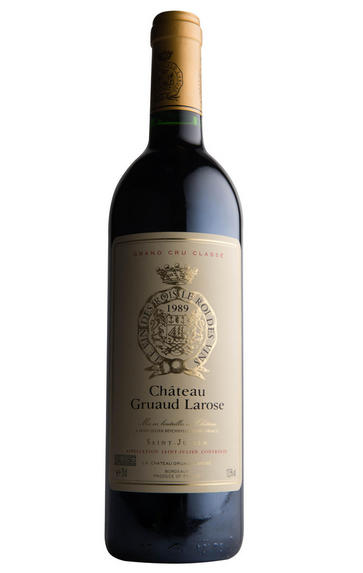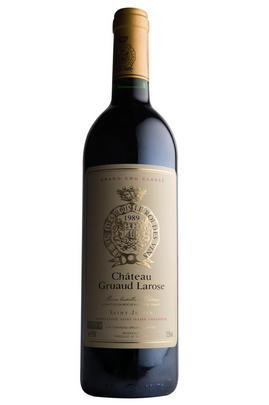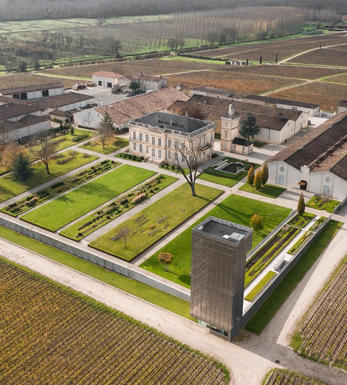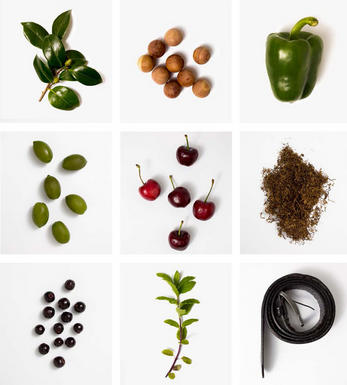
1993 Château Gruaud Larose, St Julien, Bordeaux

Critics reviews
Robert M. Parker, Jr. - 28/02/1997
About this WINE

Chateau Gruaud Larose
Château Gruaud-Larose is a 2ème Cru Classé property that produces one of St-Julien's most full-bodied and long-lived wines.
For many years Gruaud-Larose was owned by the négociants Cordier, who also own Château Talbot. It was sold in 1993 to the French conglomerate, Alcastel Alstom, which in turn sold it to the Taillan Group, owners of Chasse-Spleen and Haut-Bages-Libéral, in 1997. The talented Georges Pauli has remained as régisseur and winemaker throughout all these changes.
Gruaud-Larose has 84 hectares of vineyards located on a gravel-rich plateau just to the west of Château Beychevelle. The wine is a blend of Cabernet Sauvignon (65%), Merlot (25%), Cabernet Franc (8%) and Petit Verdot (2%). Vinification takes place in a mixture of wooden vats and cement tanks and the wine is aged in oak barriques (30% new) for 18 months.
Gruaud-Larose can be tannic and ungainly in youth but with bottle ageing it becomes marvellously harmonious and develops complex and beguiling characteristics of concentrated black fruits, cedar, spices and liquorice.

St Julien
St Julien is the smallest of the "Big Four" Médoc communes. Although, without any First Growths, St Julien is recognised to be the most consistent of the main communes, with several châteaux turning out impressive wines year after year.
St Julien itself is much more of a village than Pauillac and almost all of the notable properties lie to its south. Its most northerly château is Ch. Léoville Las Cases (whose vineyards actually adjoin those of Latour in Pauillac) but, further south, suitable vineyard land gives way to arable farming and livestock until the Margaux appellation is reached.
The soil is gravelly and finer than that of Pauillac, and without the iron content which gives Pauillac its stature. The homogeneous soils in the vineyards (which extend over a relatively small area of just over 700 hectares) give the commune a unified character.
The wines can be assessed as much by texture as flavour, and there is a sleek, wholesome character to the best. Elegance, harmony and perfect balance and weight, with hints of cassis and cedar, are what epitomise classic St Julien wines. At their very best they combine Margaux’s elegance and refinement with Pauillac’s power and substance.
Ch. Léoville Las Cases produces arguably the most sought-after St Julien, and in any reassessment of the 1855 Classification it would almost certainly warrant being elevated to First Growth status.
Recommended Châteaux: Ch. Léoville Las Cases, Ch.Léoville Barton, Ch Léoville Poyferré, Ch. Ducru-Beaucaillou, Ch Langoa Barton, Ch Gruaud Larose, Ch. Branaire-Ducru, Ch. Beychevelle

Cabernet Sauvignon
The most famous red wine grape in the world and one of the most widely planted.
It is adaptable to a wide range of soils, although it performs particularly well on well-drained, low-fertile soils. It has small, dusty, black-blue berries with thick skins that produce deeply coloured, full-bodied wines with notable tannins. Its spiritual home is the Médoc and Graves regions of Bordeaux where it thrives on the well-drained gravel-rich soils producing tannic wines with piercing blackcurrant fruits that develop complex cedarwood and cigar box nuances when fully mature.
The grape is widely planted in California where Cabernet Sauvignon based wines are distinguished by their rich mixture of cassis, mint, eucalyptus and vanilla oak. It is planted across Australia and with particular success in Coonawarra where it is suited to the famed Terra Rossa soil. In Italy barrique aged Cabernet Sauvignon is a key component in Super Tuscans such as Tignanello and Sassicaia, either on its own or as part of a blend with Sangiovese.


Buying options
Add to wishlist
Description
This is a perfect example of how well the best 1993s have turned out, boasting harmonious and beguiling characteristics of concentrated black fruits, cedar, spices and liquorice. At its peak now.
wine at a glance
Delivery and quality guarantee